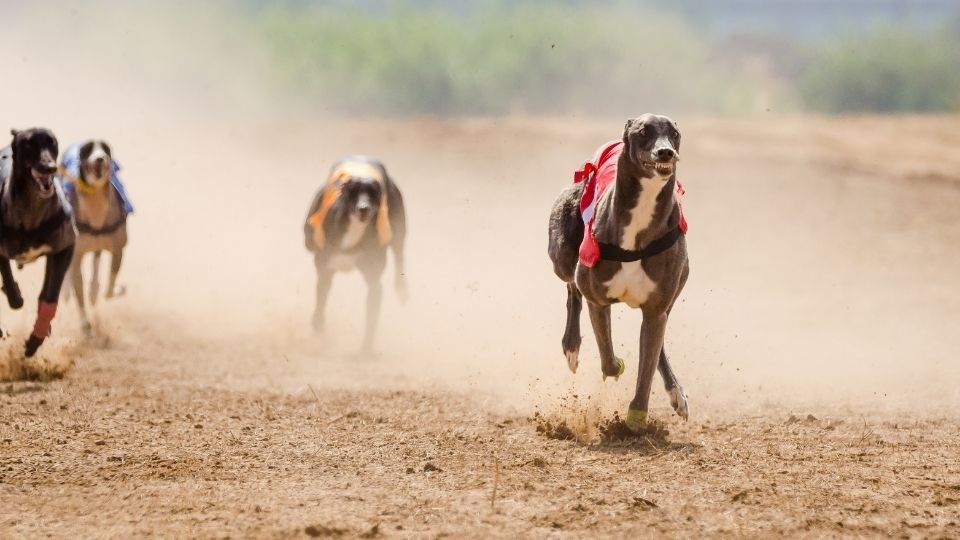The Impact of Track Conditions on Greyhound Racing Results
When it comes to greyhound racing, many factors can influence the outcome of a race—training, breeding, and even the temperament of the dogs. However, one of the most overlooked but critical elements is the track conditions on race day. Just as weather and track surfaces affect horse racing, they can also have a significant impact on greyhound performance. Understanding how these conditions influence the dogs’ speed, agility, and stamina can help fans and bettors alike make more informed decisions.
In this blog, we’ll explore how various track surfaces and weather conditions impact greyhound racing results and how to adjust your betting strategy accordingly.
1. Track Surfaces: Firm vs. Soft
The type of surface greyhounds race on plays a key role in determining how they will perform. Most greyhound tracks are made from a mix of sand and dirt, which can vary in firmness depending on how it’s maintained and the weather conditions in the lead-up to the race.
Firm Track Conditions
When a track is firm, it generally means that the surface is compact, offering less resistance to the dogs as they run. On a firm track, greyhounds can achieve faster times, as they don’t need to work as hard to push off the ground. These conditions favour greyhounds that rely on speed and those with a good acceleration out of the trap.
- Speedsters Perform Well: Fast greyhounds, especially those that are quick out of the box, tend to thrive on firm tracks. If you know a dog with a history of strong finishes and explosive starts, a firm track could enhance their performance.
Soft Track Conditions
Soft track conditions occur when the track has absorbed moisture, either from rain or watering. A softer surface is more forgiving underfoot but can also be slower, as greyhounds have to exert more energy to maintain speed. This added resistance may favor dogs that are more powerful or those with better stamina over speed.
- Stamina Over Speed: When the track is soft, speedsters may struggle to maintain their usual pace. Greyhounds with a history of running well in the latter stages of a race (known as stayers) may have the edge, as they can handle the slower, more energy-sapping surface.
2. The Role of Weather Conditions
Weather conditions not only affect the track surface but also impact how greyhounds perform physically during the race. Factors like temperature, rain, and wind can all change the dynamic of a race.
Rain: Changing the Track Dynamics
Rain is perhaps the most obvious weather factor that influences greyhound racing results. As rain softens the track, it creates a slower, more challenging surface for the dogs. However, the impact of rain can vary depending on how much has fallen and how well the track drains.
- Light Rain: A light drizzle might not change much except make the track marginally softer, but if the track has good drainage, greyhounds can still run at relatively fast times.
- Heavy Rain: With heavy rainfall, the track can become quite boggy, which significantly slows down the race. Greyhounds that tend to come from behind, often referred to as “closers,” may perform better in these conditions as their stamina becomes a key asset.
Temperature: Hot vs. Cold Races
Temperature plays a role in how the greyhounds’ muscles respond during a race. Just like human athletes, greyhounds may perform differently in varying temperatures.
- Hot Weather: In hotter weather, greyhounds may overheat more quickly, especially on a dry and firm track. This can lead to reduced stamina, with some dogs tiring more quickly than usual. Trainers often take extra precautions, but it’s worth noting that greyhounds that have raced well in warm conditions before may have an edge.
- Cold Weather: Cold weather can have the opposite effect, helping greyhounds stay cooler and perhaps run faster for longer distances. However, greyhounds unused to the cold may also struggle to keep their muscles warm, potentially leading to slower starts.
3. How Wind Impacts Greyhound Performance
Wind, while less obvious than rain or track firmness, can still play a role in how a race unfolds. The direction and strength of the wind can alter a greyhound’s running style or even give an advantage to some runners over others.
- Tailwind: A tailwind (wind blowing in the direction of the race) can aid greyhounds, helping them maintain faster speeds, especially in the home straight.
- Headwind: A headwind (wind blowing against the dogs) can slow down the race, especially in the initial stages when greyhounds are trying to break away from the pack. In these conditions, stronger, more powerful greyhounds may have an advantage, as they can power through the resistance more easily.
4. The Importance of Trap Bias in Different Conditions
Another key factor to consider when looking at how track conditions affect greyhound racing results is trap bias—the potential advantage or disadvantage of starting from certain traps (starting boxes) on particular tracks.
Some traps may have a better drainage system, keeping the surface firm, while others may suffer more from rain or overwatering, resulting in a softer start. Understanding how different traps behave under specific conditions is crucial for making more informed betting decisions.
For example:
- In wet conditions, a dog starting from an inside trap may encounter less puddling or softer ground than one starting on the outside, depending on the track’s drainage.
- In windy conditions, greyhounds on the outside traps may be more exposed to headwinds, while those on the inside may be somewhat shielded.
5. Adjusting Your Betting Strategy Based on Conditions
Now that we’ve looked at how track surfaces and weather conditions affect greyhound racing, it’s essential to adjust your betting strategy accordingly. Before placing any bets, take the time to assess the track and weather conditions. Look for greyhounds that have a proven history of running well on similar tracks or in similar weather.
Here’s how you can apply this knowledge to your greyhound betting:
- On Firm Tracks: Favor greyhounds with strong acceleration and fast starts. Speedsters who are quick out of the trap are likely to benefit from the firm surface.
- On Soft Tracks: Look for greyhounds with a history of staying power. These dogs tend to conserve energy and finish strong on more challenging, slower surfaces.
- In Rainy Conditions: Be cautious of betting on front-runners. Slower tracks favour dogs that are good at pacing themselves and coming from behind in the latter stages of the race.
- Wind Conditions: Consider how a tailwind or headwind might impact your greyhound’s performance based on their position in the field.
Track conditions play a crucial role in the outcome of greyhound races, and understanding their impact is essential for bettors and fans alike. From track firmness to rain and wind, each factor can shift the balance of power in a race. By assessing the conditions and considering how different greyhounds perform in various scenarios, you can make more informed predictions and adjust your betting strategy to increase your chances of success.
When the next race rolls around, take a closer look at the track conditions—you might just find that edge you’ve been looking for.




